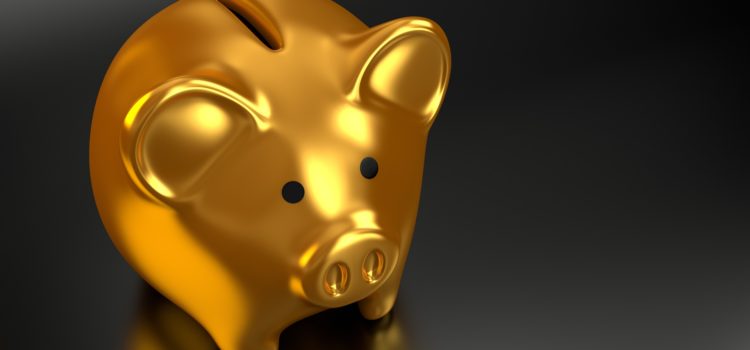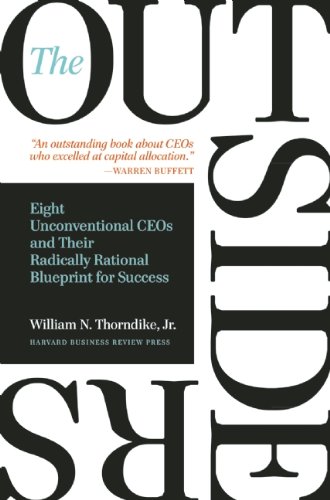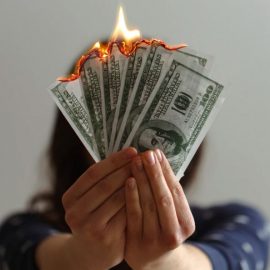

This article is an excerpt from the Shortform summary of "The Outsiders" by William N. Thorndike, Jr. Shortform has the world's best summaries of books you should be reading.
Like this article? Sign up for a free trial here .
What does top business tycoon Warren Buffett invest in? Will Warren Buffett’s stock portfolio and investment strategy help you succeed?
While the complete portfolio of Berkshire Hathaway may not be available to most of us, you can take a learn about Warren Buffett’s stock portfolio, how he built it, his investment history, and major stock purchases to understand his investment strategy–and maybe use it yourself.
Warren Buffett Stock Portfolio: How Did He Choose?
Warren Buffett’s stock portfolio was already on its way before Buffett purchased his company, Berkshire Hathaway. Warren Buffett’s stock portfolio grew in part due to the method of value investing.
Warren Buffett began deviating from the value method, instead investing in high-quality companies that had a strong competitive profile and long-term prospects. His early investments in this style included Disney and American Express. These were important contributions to Warren Buffett’s stock portfolio.
In 1965, Buffett purchased the textile company Berkshire Hathaway, a 100-year-old family business, through a hostile takeover. The company was only worth $18 million in enterprise value and was in a commodity business, but Buffett saw it as a platform to build his investments around. After installing a new CEO, who optimized operations, Berkshire Hathaway had $14 million of profit, and Warren Buffett’s stock portfolio gained value.
Buffett used this profit to buy National Indemnity, an insurance company that generated a large amount of float—the value of premiums received before they are paid out as claims. Insurance companies rely on investment returns from float to generate a profit; sometimes years can pass between when premiums are received and when they need to be paid out. In essence, Berkshire was able to receive cash at 3% and invest it at 13%. Buffett used this float to invest in businesses, sometimes buying them outright. His purchases included a newspaper in Omaha and a local bank in Illinois, and Warren Buffett’s stock portfolio was further diversified.
His investing style was further honed in the 1970s, as inflation was a common concern among investors. The typical thinking was that hard assets like gold were the best protection against inflation. But Warren Buffett’s stock portfolio was still growing. This is because Buffett saw things differently, and developed key components of his investment thesis:
- He believed that companies that had the ability to raise prices and that had low capital requirements were best protected against inflation. These companies included beloved consumer brands that were market leaders.
- The best way to value a company was based on income statement and cash flows, as well as intangibles like brand power and market share. This was a departure from Graham’s method of using balance sheet and net working capital.
- To avoid leakage of growth to taxes, Buffett would prefer holding investments for a long time. This allowed for longer periods of compounding growth without paying taxes on exiting positions.
In short, where Benjamin Graham might have considered a company too expensive based on its book value, Buffett saw it could be cheap, because of the company’s long-term potential to consistently generate high returns on capital. Warren Buffett’s stock portfolio was of top importance.
One example is illustrative—in 1972, Buffett purchased See’s Candies for $25 million, when it had $7 million in book value and $4.2 million in pretax profits. This was a huge addition to Warren Buffett’s stock portfolio. At 3 times book value, it would have been too expensive for Graham, but at 6 times pretax income and strong brand loyalty, it was a reasonable purchase. Over the decades, See’s Candies has not grown unit sales tremendously, but its strong brand allowed it to raise prices consistently. See’s earned a 32% annual return over 27 years and has provided $1.65 billion in cash flow for reinvestment.

———End of Preview———
Like what you just read? Read the rest of the world's best summary of William N. Thorndike, Jr's "The Outsiders" at Shortform .
Here's what you'll find in our full The Outsiders summary :
- What great CEOs like Warren Buffett do that average CEOs don't
- How to master the art of capital allocation
- How to be a great manager that your team is excited to work with






